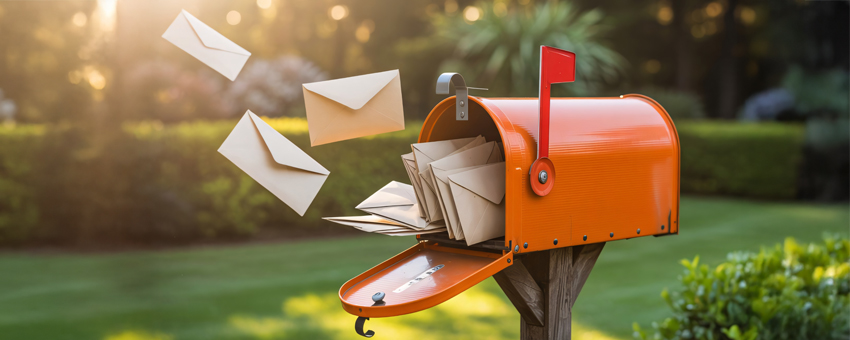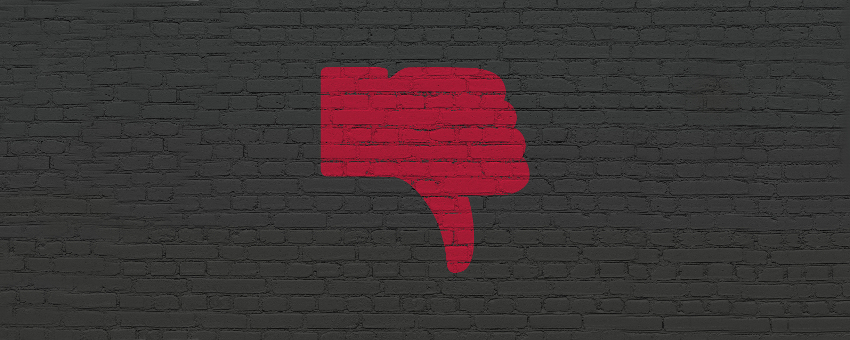What Is Direct Mail Marketing?
Posted on November 7, 2025Are you curious about direct mail marketing but have never pulled the trigger? We have an in-depth guide all about what is involved in a postcard marketing campaign. Once you know all the details and benefits, you can try it out with confidence to grow your business.
Direct mail marketing is a traditional marketing method that has been in existence since the printing press was invented in 1440. But believe it or not, it’s still relevant to today.
It is a highly effective advertising strategy where businesses send physical promotional materials—such as postcards, letters, catalogs, flyers or brochures—directly to a potential customer’s mailbox. Unlike digital ads that appear on a screen, direct mail creates a tangible connection between a brand and its audience. It gives customers something they can hold, read, and remember—helping businesses stand out in an increasingly digital world.
Why should you even consider direct mail to help grow your business?
In an age of overflowing email inboxes and online ads, physical mail feels refreshing and personal. Studies show that people are more likely to open and engage with direct mail compared to digital content.
The tactile experience of holding a postcard or letter also builds trust and reinforces brand credibility. When combined with digital campaigns, direct mail becomes even more powerful—bridging the gap between offline and online marketing to increase conversions and customer loyalty.
How Direct Mail Works
The process begins with identifying your target audience. Who do you want to reach?
Factors to consider:
- Location
- Age
- Gender
- Family status: single, married, divorce, children in the home
- Income
These basic traits help you navigate selecting a mailing list. Do you want everyone in the neighborhood to receive your mailer or just families with children in the home? You can get as granular as you like with your mailing list.
Once you’ve narrowed down your audience, marketers design the print piece and incorporate your graphics and specific message. After printing and addressing, the print piece is mailed straight to your target.
Each piece of mail can be tracked for performance using codes, personalized URLs, or QR codes, helping measure response rates and return on investment.
Which type of mailer should I choose?
1. Postcards
What they are: A flat, card-style piece of mail (no envelope necessary). Typical sizes range from 4×6″ up to 6×11″.
Why they work: Because there’s no envelope to open, the message is immediate. They’re generally lower in cost (print + postage) and good for high-frequency mailings.
2. Letters in Envelopes
What they are: A traditional mail piece where you put a letter (and sometimes inserts) into an envelope.
Why they work: They feel more personal/private; recipients are often more willing to open because the envelope conceals the message until exposed. Good for targeting high-value prospects, or for campaigns where you need to build trust.
Best uses: B2B communications, fundraising appeals, premium offers, high-value clients, situations where you need more explanation or storytelling.
Considerations: Higher cost (envelope + stuffing + perhaps more personalization) and printing/assembly.
3, Self-Mailers
What they are: A folded piece of mail that acts as both the letter and the envelope—there’s no additional outer envelope required. It is sealed and mailed as is.
Why they work: They offer more space than postcards, more design flexibility (folds, panels).
Best uses: When you want more space than a postcard but want to avoid envelope costs; for detailed promotions, coupons, multi-panel storytelling.
Considerations: Sealing must comply with mail-rules; design needs to consider folds/panels. Larger size = possibly higher postage.
4. Brochures / Catalogs / Flats
What they are: Multi-page or large format mailers (e.g., a booklet, a magazine style, or a large “flat” mail piece).
Why they work: Great when you have a lot to show (multiple products/services), want a deeper experience, and/or want to build brand presence. Recipients may keep them longer.
Best uses: Retail product catalogs, luxury brands, when you want to showcase multiple offerings or use high-quality imagery.
Considerations: Higher print cost + higher postage (especially if size/weight exceed standard letter rates). Only efficient if targeted properly or high value.
5. Dimensional / Interactive Mailers
What they are: Mail pieces that go beyond flat formats—pop-up features, “3D” shapes, novelty format, or interactive elements (e.g., fold-outs, embedded gifts).
Why they work: They grab attention because they stand out in a mailbox full of standard mail. High engagement potential.
Best uses: When targeting a small, high-value audience and your goal is memorability / brand impression rather than mass reach.
Considerations: Much higher cost (printing, materials, postal). The higher cost must be justified by higher return.
How to Choose the Right Format for Your Campaign
Here are some factors to weigh:
- Audience type & value: If you’re targeting many low-value prospects, you might favor postcards. If you’re targeting high-value clients, letters or dimensional pieces may make sense.
- Message complexity: If your message is simple (e.g., “50% off this weekend”), a postcard might suffice. If you need to explain benefits, show multiple products, or add inserts/coupons, choose something with more space (self-mailer, brochure).
- Budget (print + postage): Simpler formats cost less. Always check postage implications—size, weight, and whether it qualifies for standard “letter” or “flat” or something higher.
- Call to action (CTA) & response mechanism: For quick responses (visit website, call now, coupon code) postcards/self-mailers are good. For building relationships (thank you letters, detailed offers), letters/envelopes are better.
- Brand positioning: If you want to reinforce a premium brand, the tactile/quality impression matters (brochures, premium materials, interactive formats).
- Stand-out factor: If mailbox saturation is high in your market and you need to break through noise, consider an oversized or dimensional format.
The Bottom Line
Direct mail marketing isn’t just an old-fashioned tactic—it’s a proven strategy that continues to deliver results. By reaching customers where they live and offering something personal and memorable, businesses can create meaningful connections that drive engagement and sales. Whether you’re promoting a new product, announcing a sale, or simply saying thank you, direct mail can make your message stand out—literally.






